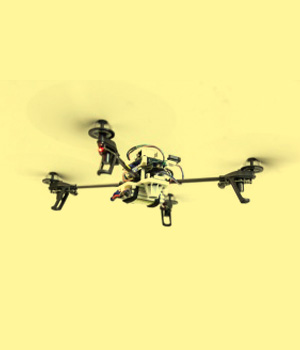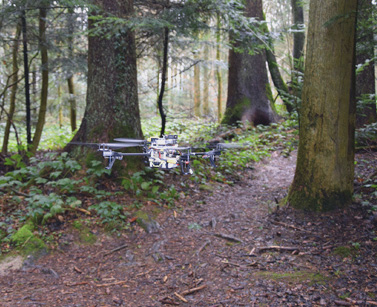Die Drohnen sind los! – Drones to the rescue!
The research gruop of Prof. Davide Scaramuzza presents its autonomous drones’ skills.
Basel, Sunday 24th of April 2022, 02:11:37, the Swiss Seismological Service records earthquakes. With a peak magnitude of 6.7 on the Richter scale, this not an ordinary earthquake. Rescue teams of the region are on alert.
02:12:55, the emergency call center has received notice that an old part of the Cantonal hospital in Liestal has collapsed. Emergency response teams are dispatched.
02:31:43, the fire battalion chief of Basel-Land is on site. Seven persons are unaccounted for. Under his command, a fleet of autonomous drones is deployed to perform a search as the risk is too high to send first responders inside the collapsed edifice.
02:39:12, a swarm of 25 foldable drones enters the building. They split the search area among themselves to allow for an efficient exploration.
02:41:10, drone #21 has just found a first victim. Using the location data transmitted by number 21, a response team is sent on the shortest path to that person. The risk is thus minimized.
02:45:03, after only 5 minutes and 51 seconds the drones’ mission is already completed. The firefighters now have a virtual map of the site in their possession which lets them plan safer rescue routes to the rest of the victims.
Such a scenario is the vision our research group. We develop algorithms that enable robots to autonomously explore unknown areas, possibly even localize people in distress. As such, they can deploy in places that cannot be accessed or are too dangerous for humans, like collapsed buildings or nuclear contaminated facilities.
PhD Student Davide Falanga works together with Philipp Foehn and drone engineer Julien Kohler at the robotics and perception group. More
Drone engineer Julien Kohler works together with the PhD students Davide Falanga and Philipp Foehn at the robotics and perception group. More
PhD Student Philipp Foehn works together with Philipp Foehn and drone engineer Julien Kohler at the robotics and perception group. More
Prof. Davide Scaramuzza is the leader of he robotics and perception group. This laboratory belongs to the Institute for Informatics of the University of Zurich (UZH) and is associated with the Institute for Neuroinformatics of both the ETH Zurich and the UZH. More
Related contributions

